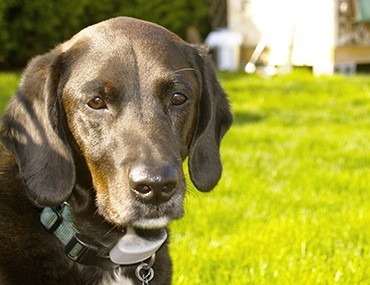Reviewed by Dr. Peter Kintzer on March 25, 2014
Overview
This is one virus you DON’T want your dog to pick up.
Canine parvovirus (CPV) is a nasty, highly contagious illness, spread from dog to dog by direct or indirect contact with feces. That means that your dog can get CPV from either eating an infected dog’s poop or simply sniffing an infected dog’s hindquarters! It can be especially hard on puppies who haven’t yet been vaccinated because their immune systems haven’t yet fully developed.
CPV can affect all dog breeds, though for some reason some breeds it affects some breeds more than others, such as:
- Rottweilers
- Doberman Pinschers
- Pit bull breeds
- Labrador Retrievers
- German Shepherds
- English Springer Spaniels
Symptoms
CPV shows up in two forms: intestinal and, more rarely, cardiac. Symptoms of the intestinal form of CPV include:
- Extreme vomiting
- Severe diarrhea, often containing mucus or blood
- Anorexia
- Lethargy
- High fever or, sometimes, a low body temperature (hypothermia)
- Severe abdominal pain
Because the intestinal form of CPV results in fluid losses and because the affected intestines do not nutrients and proteins properly, he’ll weaken, lose weight and become dehydrated pretty quickly.
The cardiac form of CPV tends to attack very young puppies, causing cardiovascular and respiratory failure and, unfortunately, often leads to death.
 Diagnosis and Treatment
Diagnosis and Treatment
Every minute counts when it comes to diagnosis! If your dog is exhibiting one or more of the symptoms listed above, seek emergency veterinary care as soon as possible.
CPV is an aggressive illness and dogs tend to deteriorate soon after becoming infected. If CPV is suspected, your veterinarian will first perform a physical exam and then follow up with other tests to figure out the cause of your pooch’s discomfort. Such tests include:
- A complete blood cell count (CBC) to rule out blood related conditions; a low white blood cell count is usually seen with CPV infection
- Chemistry tests to screen for kidney, liver, and pancreatic disease as well as to check sugar levels
- Fecal test to detect the presence of CPV and rule out intestinal parasites
- Urinalysis
- Abdominal imaging, through x-ray or ultrasound, to look for intestinal obstruction, enlarg
ed lymph nodes, and excess fluids in the intestines
Treatment
CPV’s pretty rough on dogs and pretty much always requires hospitalization for 24-hour care and monitoring. Left untreated, dogs with the virus are likely to die. However, since it’s a viral infection, there’s no cure for CPV. This means that your veterinarian will treat and support your dog and help them weather the infection.
Treatment is aimed towards managing your dog’s dehydration and electrolyte imbalances, and includes:
- IV fluid therapy
- Nutritional therapy
- Medications to control vomiting, diarrhea, and nausea
- In severe cases, blood plasma transfusions.
- Pain medications
In addition, antibiotics are often prescribed to prevent bacterial infections, which can take advantage of your dog’s weakened state and often prove to be fatal. In general, dogs shouldn’t eat or drink until symptoms have subsided, and fluid support is usually needed for several days. Your veterinarian will discuss the best course of action to get your dog back to his normal, happy, healthy self as soon as possible.
Management
CPV can be brutal on dogs, but survival rate is relatively optimistic, though it’s lower for puppies.
While recovering from CPV, your dog will have a weakened immune system for awhile and could be at risk for other illnesses. Fortunately, there are ways in which you can boost your dog’s immune system and keep him safe from illness. Options include:
- A healthy and balanced diet that is easily digestible
- Make sure your dog is fully vaccinated against other illnesses
Every dog and every case is different, so your veterinarian will help you formulate an effective management plan to get your furry friend back to strength.
For some time after recovery, your dog will remain contagious and should be kept away from other dogs. You’ll have to isolate your dog from other dogs, even – and especially – your own. And though recovery from CPV makes dogs mostly immune from getting the virus again, future immunity isn’t guaranteedandvaccination is generally recommended.
Besides taking care of your dog, you’ll need to spend some time disinfecting your dog’s toys, crates, kennels, and toys. People can carry the virus on their hands and clothes so be sure to wash thoroughly after being around a sick dog. Remember, CPV can live in the environment for at least a year, according to the American Veterinary Medical Association, so make sure to speak with your veterinarian about vaccination and any lingering danger of infection in your house and yard.
Prevention
The number one way to prevent CPV is vaccination. Puppies should be vaccinated starting at a young age, and usually the vaccinations should be applied in a staggered manner as directed by your veterinarian. Again, for each dog it’s different. Your veterinarian will provide the best recommendations for keeping your dog safe from CPV.
If you have any questions or concerns, you should always visit or call your veterinarian – they are your best resource to ensure the health and well-being of your pets.
